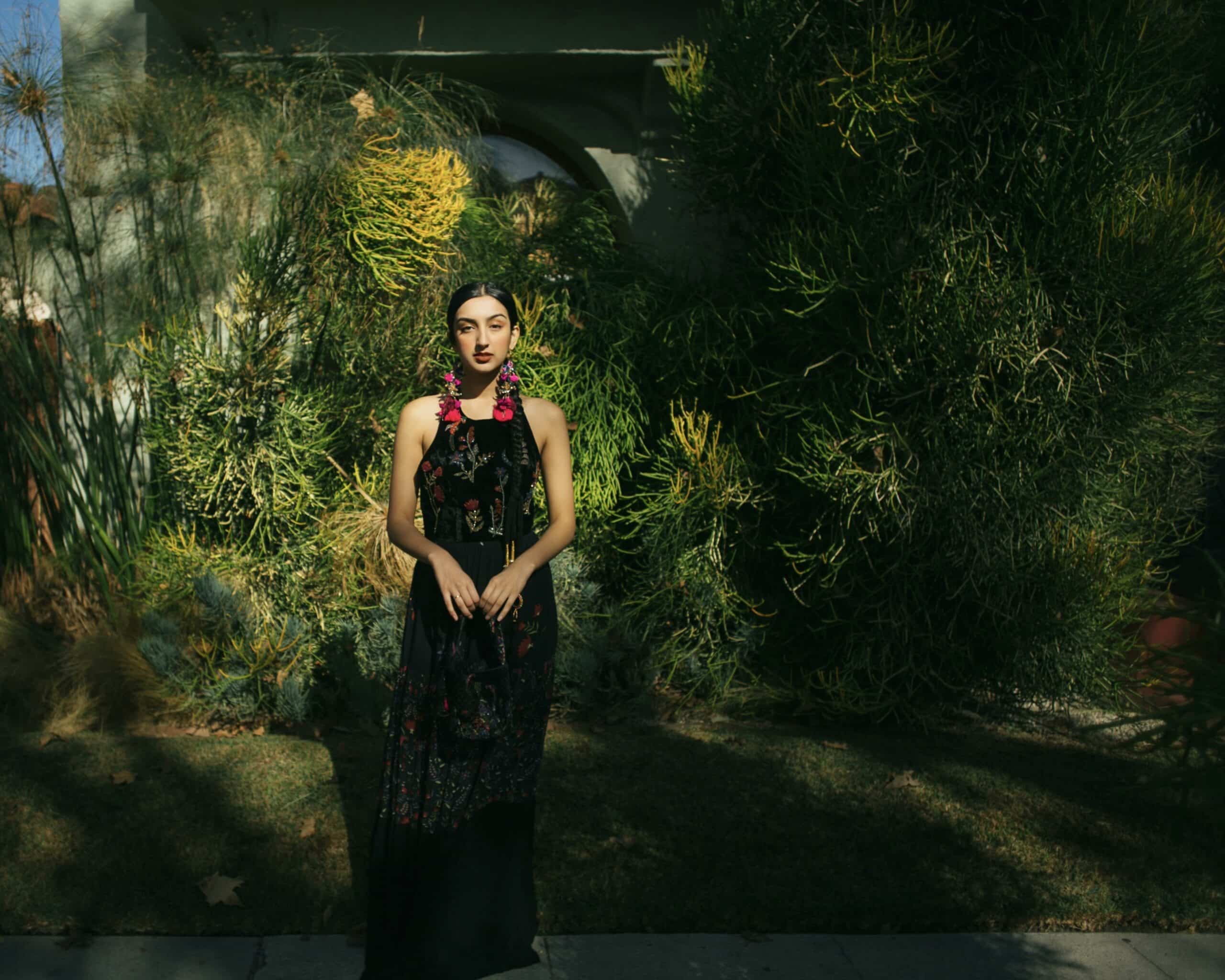For those who don’t know her yet, Aditi Mayer is an activist. Originally from Southeast Asia and based in Los Angeles, she campaigns for a better world. It is with a view to social awareness that she perfectly combines the world of art, education and the fashion industry to convey her messages. At 25, this polyfaceted young woman is also a photojournalist on social and environmental law topics and an influencer in sustainable fashion.
Understanding an industry that “operates in a colonial way”
In 2014, a year after the collapse of Rana Plaza in Bangladesh, Aditi made her debut in the sustainable fashion movement. After noticing the ravages of the fashion industry on the environment, human rights and especially on people of color around the world, Aditi sought to understand the historical and socio-political foundations that allow this industry “to operate in a colonial way, rooted in the exploitation and extraction of labor and the natural environment”. That year, the influencer created a platform (ADIMAY.com) that allows her to unpack the intersections of style, sustainability and social justice by examining fashion through the lens of decolonization and intersectionality.
She has since become a sustainability activist, approaching her work in multiple areas: storytelling, journalism, creative direction and modeling, to explore themes of identity, gender, work and the environment Alongside these activities, Aditi Mayer is a board member of Intersectional Environmentalist and State of Fashion. And last year, she documented the social and environmental impacts of India’s fashion supply chain as a National Geographic Digital Storytelling Fellow.
An inspiring model of her generation, Aditi has collaborated with many international publications such as Vogue, Grazia, Marie Claire, The New York Times or AD, to share her vision of the world.
Excerpt from “Sustainable Thinking” for Ferragamo
Recently, she published an article on the Ferragamo website, in the “Sustainable Thinking” section, where various fashion players are invited to express themselves to propose alternatives to production and consumption methods. Here is an exerpt :
“Sustainability has quickly become one of the most ubiquitous terms in the fashion world, even though its use remains largely unregulated. Its implications are many and varied: from environmental impact to work ethics. Basically, the definition of sustainability is “the ability to sustain oneself at a certain rate or level”. (…)
But when it comes to fashion, it’s important to realize that the dominant fashion model is degenerative – from the extraction and exploitation of finite resources, from raw materials to human labor, like way to “infinite” growth and success.
Sustainability requires reimagining the system. Sustainability requires a questioning of power. Sustainability demands that we look at the impact of fashion not just as a product we see in stores, but also in its early stages: as a product of land and labor.”
In this article, Aditi Mayer discusses the importance of biodiversity. “To understand fashion, we cannot forget that clothing is a product of agriculture – unless it is derived from synthetic materials like polyester, a by-product of the fossil fuel industry. Instead of proposing one-size-fits-all solutions that would lead to greater fashion fiber homogeneity, or looking at ecological parameters through isolated metrics such as water consumption, we need to ask more constructive questions like, for example : How can we use indigenous fibers and indigenous agricultural approaches to support a sustainable and biodiverse future?
While agricultural biodiversity is key to a sustainable future, we also need to challenge the cultural aesthetics of the fashion industry. Currently, Western aesthetics are being exported around the world, whether it is the growing presence of fast fashion giants in stores, after decades of overseas sourcing, or the constant flow of clothing second-hand goods imported from the North to the South, which often destabilize the local textile and manufacturing industries in favor of fast fashion and cheap items.
Would a return to local, ethnically-focused clothing help revive a set of craft practices that are intrinsically linked to indigenous forms of production? In many textile-rich nations that were ravaged by colonialism, there is a movement to revive indigenous plant varieties necessary for (indigenous) forms of production that were destroyed by colonial systems of tariffs and tariffs. discriminatory excise duty against indigenous producers.
In India, many communities are in search of organic seeds of short-staple cottons which, over millennia, have adapted to the local microclimates of South Asia, making them naturally resistant to local pests and insects. , and which thrive on rainwater as a source of water.
In Bangladesh, there has recently been a resurrection of the phuti karpas plant, which grew along the Meghna River and was essential for the production of Dhaka muslin, the most precious fabric on the planet 200 years ago.
Thinking about the diversity needed in sustainable production – from fibers to artisanal practices, also means creating a decentralized approach to fashion. Responses to sustainability are no longer solely based on top-down solutions from hegemonic power structures, but rather on location-based approaches centered on indigeneity and local supply chains.
What we ultimately need is not more mass production, but rather production by the masses.
And mass production doesn’t necessarily mean making our clothes from scratch. It’s about democratizing the way we can all engage in fashion: by learning to sew to mend or adapt our clothes, by recycling the pieces we already own, whether it’s dyeing a garment to change the look or turn old t-shirts into cleaning rags.
The key is to think about ways to integrate longevity and circularity into the fashion model in order to break out of a constant cycle of consumption.
The dominant fashion model has largely operated on the basis of the global race to the bottom – the idea that brands are jostling to produce as fast as they can, as much as they can, as cheaply as they can.
While the sustainable and ethical fashion industries are incredibly important, they have remained niche alternatives, emphasizing the normalization of exploitation as business as usual. (…)”







